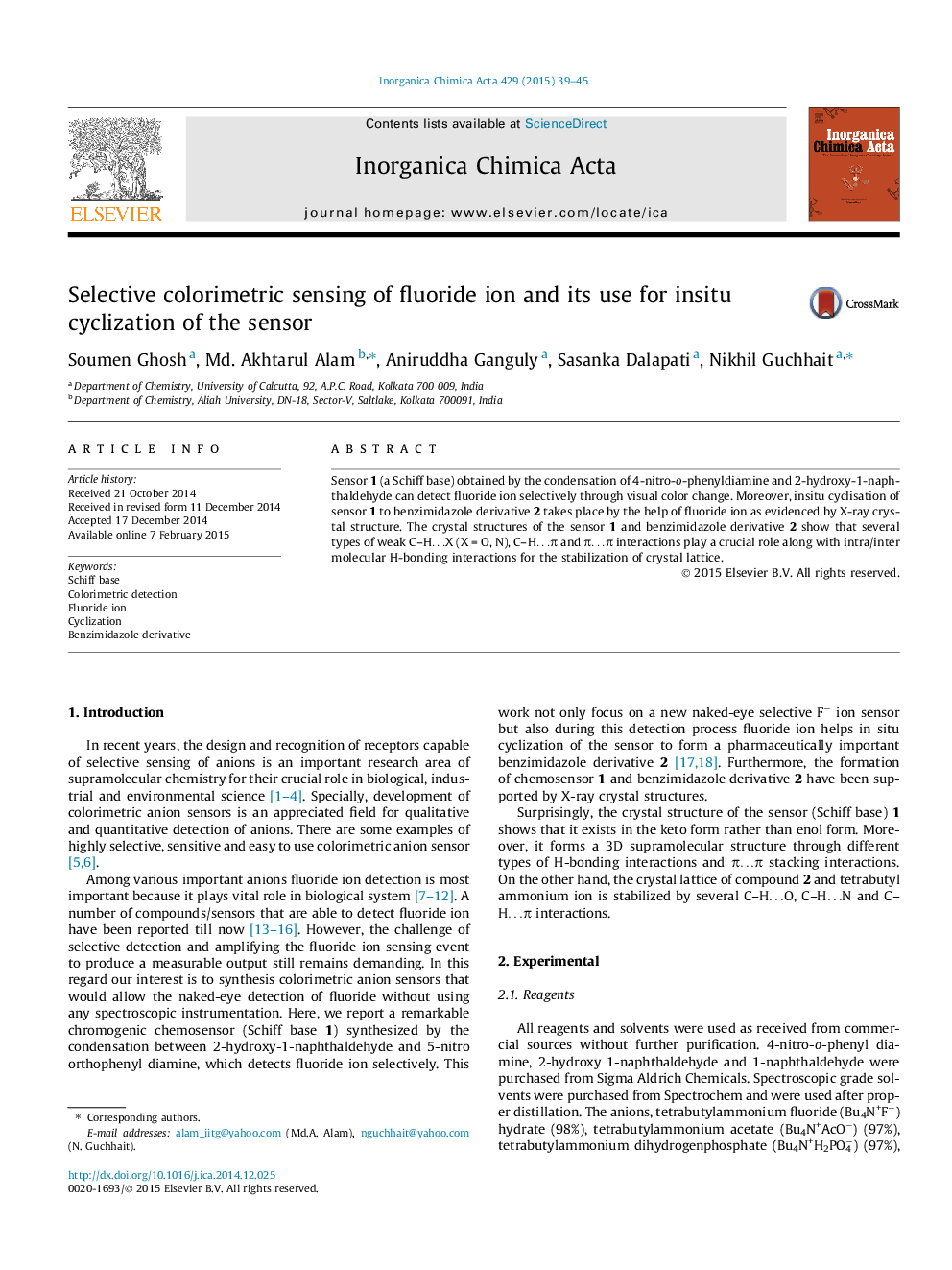| Article ID | Journal | Published Year | Pages | File Type |
|---|---|---|---|---|
| 1306604 | Inorganica Chimica Acta | 2015 | 7 Pages |
•A colorimetric and naked-eye selective F− ion sensor.•Sensor’s crystal structure shows the existence of keto form rather than enol.•The crystal lattice of the sensor shows π…π stacking interactions.•Insitu cyclisation of sensor to a benzimidazole derivative by fluoride.
Sensor 1 (a Schiff base) obtained by the condensation of 4-nitro-o-phenyldiamine and 2-hydroxy-1-naphthaldehyde can detect fluoride ion selectively through visual color change. Moreover, insitu cyclisation of sensor 1 to benzimidazole derivative 2 takes place by the help of fluoride ion as evidenced by X-ray crystal structure. The crystal structures of the sensor 1 and benzimidazole derivative 2 show that several types of weak C–H…X (X = O, N), C–H…π and π…π interactions play a crucial role along with intra/inter molecular H-bonding interactions for the stabilization of crystal lattice.
Graphical abstractThe sensor 1 can detect fluoride ion selectively through visual color change. Moreover, insitu cyclization of sensor 1 to benzimidazole derivative 2 takes place by fluoride ion as evidenced by X-ray crystal structure.Figure optionsDownload full-size imageDownload as PowerPoint slide
